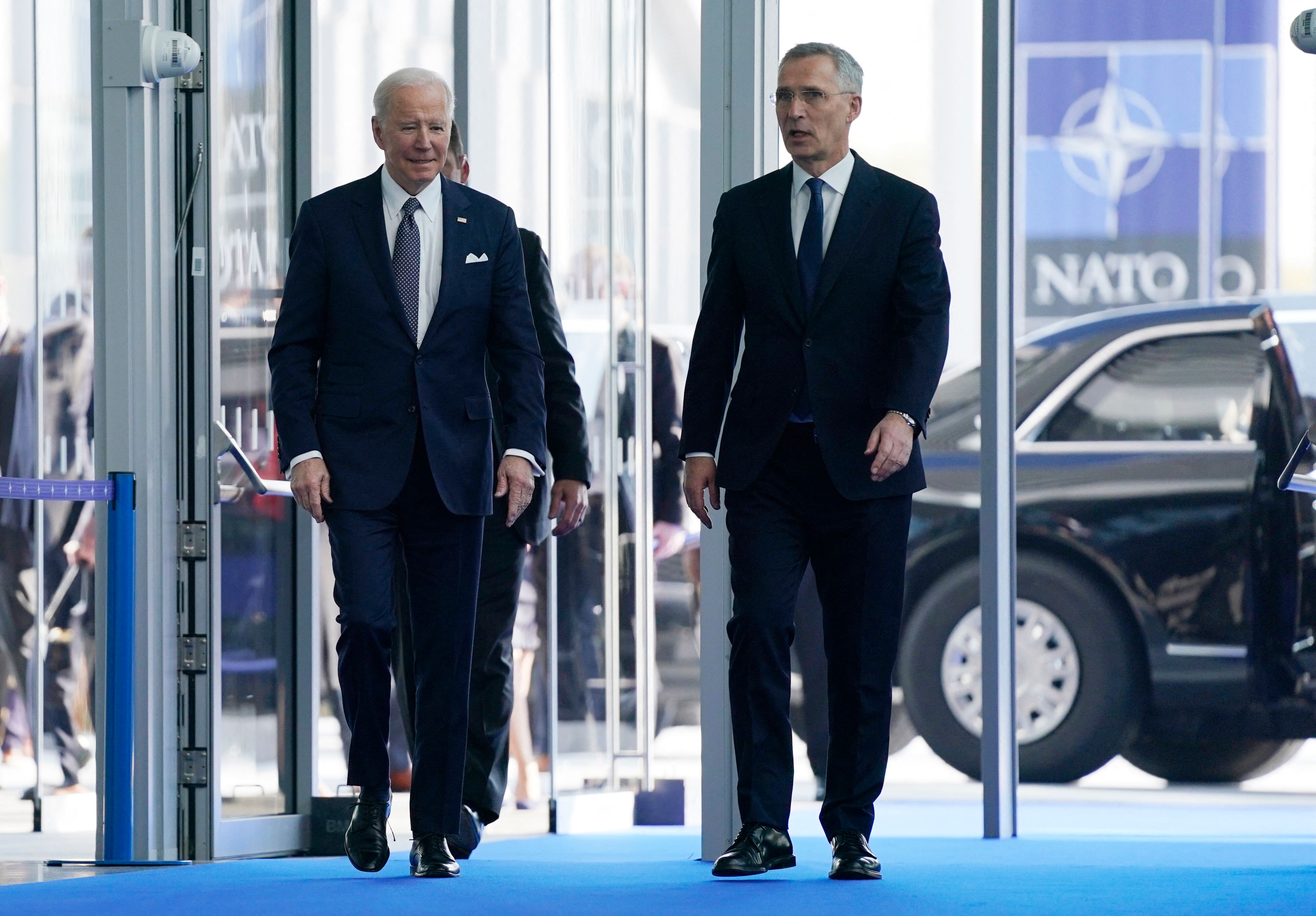Biden’s Commitment to NATO: Biden Nato

Biden nato – President Biden has repeatedly emphasized his commitment to NATO and has taken steps to strengthen the alliance. He has increased US military spending on NATO, expanded US troop presence in Europe, and worked to improve coordination between NATO members.
Biden’s commitment to NATO has been unwavering, evident in his recent reaffirmation of support for the alliance during his biden interview. This interview underscores his belief in the importance of transatlantic cooperation, highlighting the vital role NATO plays in maintaining peace and security in the Euro-Atlantic region.
Biden’s unwavering support for NATO is a testament to his commitment to ensuring the alliance remains a cornerstone of global stability.
Biden’s leadership has had a positive impact on NATO’s cohesion and effectiveness. He has helped to rebuild trust between the United States and its allies, and he has led the alliance in responding to new challenges, such as the Russian invasion of Ukraine.
Biden’s meeting with NATO leaders at the NATO summit showcased the strength of the alliance. Their discussions focused on bolstering Ukraine’s defense against Russian aggression, emphasizing the importance of NATO’s collective security commitment. The summit reaffirmed Biden’s leadership in coordinating international efforts to support Ukraine and deter further Russian aggression.
Biden’s Initiatives and Policies
- Increased US military spending on NATO by 4% in 2022.
- Expanded US troop presence in Europe by 20,000 troops in 2022.
- Established a new NATO Center for Artificial Intelligence.
- Led the alliance in responding to the Russian invasion of Ukraine, including by providing military aid to Ukraine and imposing sanctions on Russia.
NATO’s Role in the Ukraine Conflict

NATO has played a significant role in the Ukraine conflict since Russia’s annexation of Crimea in 2014. The alliance has provided military, diplomatic, and humanitarian assistance to Ukraine, and its involvement has had a significant impact on the course and potential outcomes of the conflict.
Military Assistance
NATO has provided Ukraine with a range of military assistance, including weapons, training, and intelligence. This assistance has helped Ukraine to defend itself against Russian aggression and has played a key role in preventing Russia from achieving its objectives in the conflict.
Diplomatic Assistance
NATO has also provided Ukraine with diplomatic assistance, including political support and negotiations with Russia. The alliance has condemned Russia’s actions in Ukraine and has called for a peaceful resolution to the conflict. NATO has also worked to coordinate the international response to the crisis, including sanctions against Russia.
Humanitarian Assistance
NATO has also provided Ukraine with humanitarian assistance, including food, water, and medical supplies. The alliance has also helped to evacuate civilians from conflict zones and has provided support to refugees.
Impact of NATO’s Involvement
NATO’s involvement in the Ukraine conflict has had a significant impact on the course and potential outcomes of the conflict. The alliance’s military assistance has helped Ukraine to defend itself against Russian aggression, and its diplomatic assistance has helped to coordinate the international response to the crisis. NATO’s humanitarian assistance has also helped to alleviate the suffering of the Ukrainian people.
Challenges and Opportunities for NATO
NATO faces numerous challenges, including internal divisions, external threats, and resource constraints. Despite these challenges, NATO has the potential to adapt and evolve to meet future security needs. By addressing its challenges and seizing opportunities, NATO can enhance its role in safeguarding the security of its member states.
Internal Divisions
NATO has faced internal divisions in recent years, particularly over issues such as defense spending, burden-sharing, and the deployment of troops to new missions. These divisions have sometimes led to disagreements and delays in decision-making.
External Threats
NATO also faces a number of external threats, including the rise of Russia, the threat of terrorism, and the proliferation of nuclear weapons. These threats have led NATO to adapt its strategies and capabilities to meet new challenges.
Resource Constraints, Biden nato
NATO faces resource constraints, particularly in terms of funding and personnel. These constraints have sometimes limited NATO’s ability to respond to new threats and carry out its missions effectively.
Potential Opportunities
Despite these challenges, NATO has the potential to adapt and evolve to meet future security needs. One opportunity is for NATO to strengthen its internal unity and cohesion. This can be done by addressing the concerns of member states and finding common ground on key issues.
Another opportunity is for NATO to develop new strategies and capabilities to meet new threats. This includes developing new technologies, such as cyber defenses and missile defenses, and strengthening its partnerships with other organizations, such as the European Union.
Strategies for Overcoming Challenges and Seizing Opportunities
To overcome its challenges and seize opportunities, NATO can adopt a number of strategies. One strategy is to increase defense spending and burden-sharing among member states. This will provide NATO with the resources it needs to meet new threats and carry out its missions effectively.
Another strategy is to strengthen NATO’s internal unity and cohesion. This can be done by addressing the concerns of member states and finding common ground on key issues.
Finally, NATO can develop new strategies and capabilities to meet new threats. This includes developing new technologies, such as cyber defenses and missile defenses, and strengthening its partnerships with other organizations, such as the European Union.